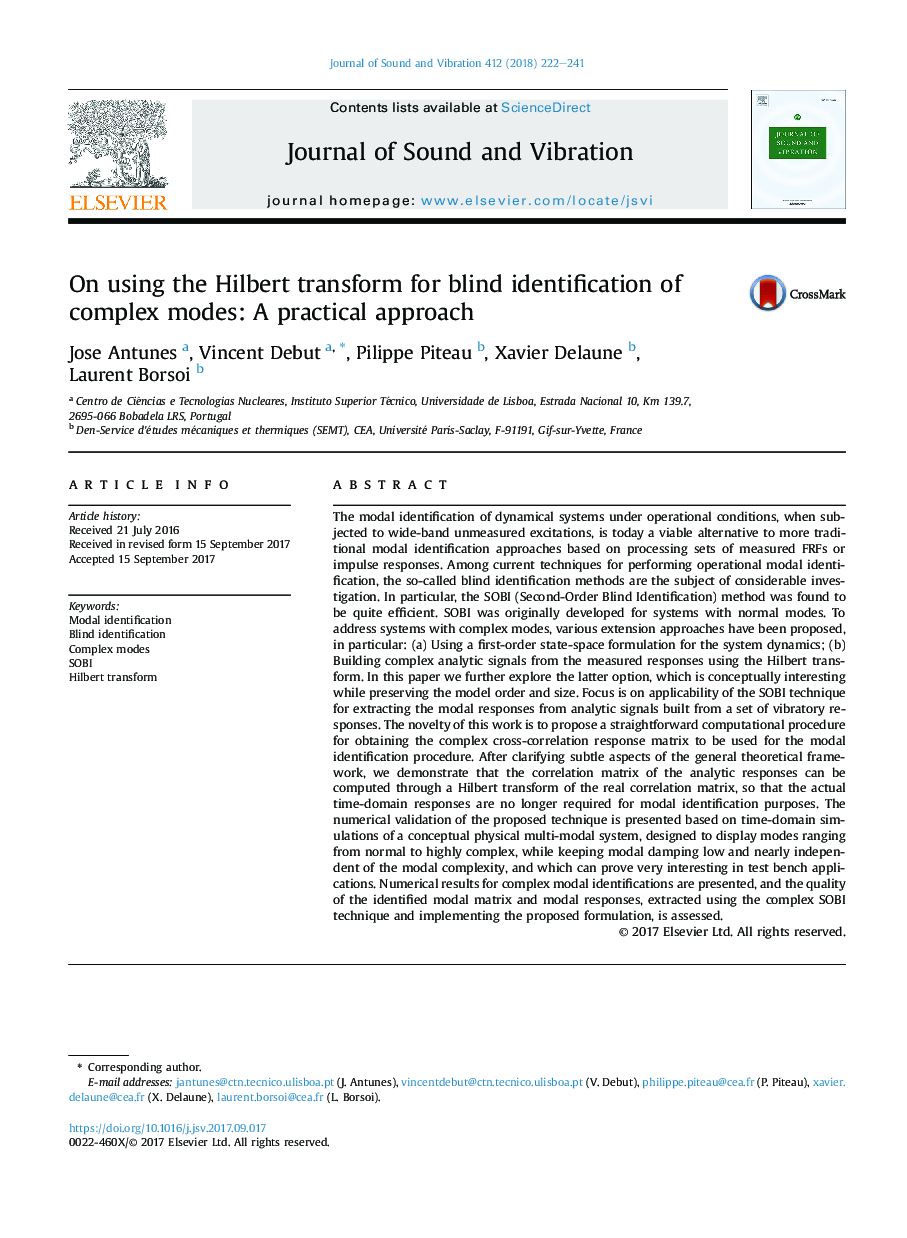| کد مقاله | کد نشریه | سال انتشار | مقاله انگلیسی | نسخه تمام متن |
|---|---|---|---|---|
| 4923837 | 1430821 | 2018 | 20 صفحه PDF | دانلود رایگان |
The modal identification of dynamical systems under operational conditions, when subjected to wide-band unmeasured excitations, is today a viable alternative to more traditional modal identification approaches based on processing sets of measured FRFs or impulse responses. Among current techniques for performing operational modal identification, the so-called blind identification methods are the subject of considerable investigation. In particular, the SOBI (Second-Order Blind Identification) method was found to be quite efficient. SOBI was originally developed for systems with normal modes. To address systems with complex modes, various extension approaches have been proposed, in particular: (a) Using a first-order state-space formulation for the system dynamics; (b) Building complex analytic signals from the measured responses using the Hilbert transform. In this paper we further explore the latter option, which is conceptually interesting while preserving the model order and size. Focus is on applicability of the SOBI technique for extracting the modal responses from analytic signals built from a set of vibratory responses. The novelty of this work is to propose a straightforward computational procedure for obtaining the complex cross-correlation response matrix to be used for the modal identification procedure. After clarifying subtle aspects of the general theoretical framework, we demonstrate that the correlation matrix of the analytic responses can be computed through a Hilbert transform of the real correlation matrix, so that the actual time-domain responses are no longer required for modal identification purposes. The numerical validation of the proposed technique is presented based on time-domain simulations of a conceptual physical multi-modal system, designed to display modes ranging from normal to highly complex, while keeping modal damping low and nearly independent of the modal complexity, and which can prove very interesting in test bench applications. Numerical results for complex modal identifications are presented, and the quality of the identified modal matrix and modal responses, extracted using the complex SOBI technique and implementing the proposed formulation, is assessed.
Journal: Journal of Sound and Vibration - Volume 412, 6 January 2018, Pages 222-241
